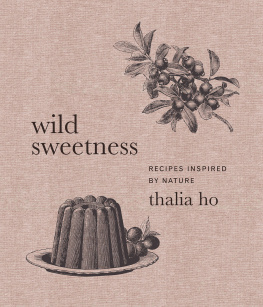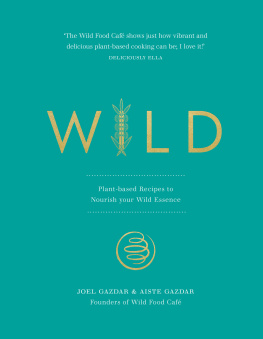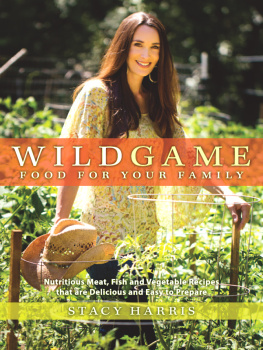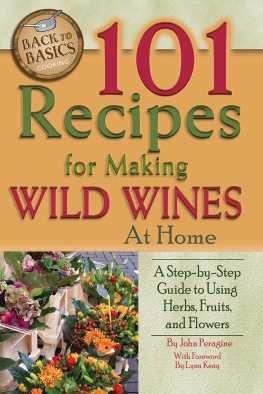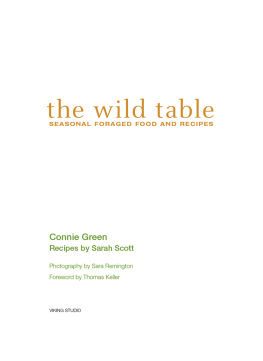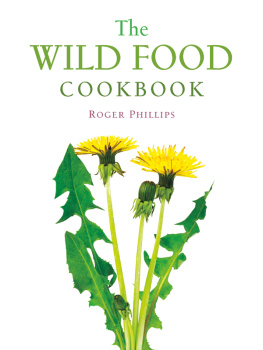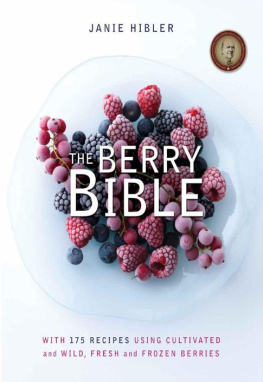Contents
Guide
To You, always
Contents
She was, finally, perfectly finished, perfectly heartbroken, perfectly wild.
MARY OLIVER, Devotions: The Selected Poems
I HAVE AN ENDLESS LOVE for the wild. The greatest moments of my life have come from it. Of thorned, stolen brambles from the side of the road, and nights around the fire, smoldered and never the same. The afternoons spent under the old quince tree, the fruit, near rot; the scent, otherworldly. Those winters in the woods, swallowed whole. Each moment, precious, and rooted in earth.
To be free is what I have only ever demanded and I am free in nature. Im at my best with feet in dirt and soil; a little primal, perhaps. Its been like this since childhood. I was raised with a strong connection to the earth, and if I think back, I see a girl within whom wild desire had been planted. I spent most of it outside, running toward something not even Im sure of. Our home had a wood that bordered it then, and I remember the first time I lost myself. I couldnt have been more than five but I remember it well. Its where I shed my first skin.
Theres something beautiful about impermanence, and the wild shows us that. Its fleeting. How rare to return to a place and it be unchanged, a season later. And while it isnt possible to experience the same moment twice, through food, it can be once again. A mouthful that tastes like a memorybrief, but never forgotten.
I never thought I would be here, in food. I wanted to become an artist. Its that pursuit that led me down many paths, oftentimes disorientated. The relationship between food and me has never been one of ease, for I was born with an insatiable hunger that left me starving. It almost ate me whole, but the wild is why I am alive. Its where I go to meet myself, and without itI dont know where I would be. I owe a lot to it.
If anything, I know the strength that food has, the wild has, and at its core, thats what this is about. It seeks to sate a place far deeper than hunger, for both are more than fuel. Following a natural narrative is in our bones. Less about the external benefits of seasonal eating, and more about the internal ones, our own landscapes that need nourishing. And I believe in its strength, however devouring.
These chapters mirror the seasons, their essence, reflected. We begin early, in spring, with Evergreen, a herald of new life against the dark. The first of the flowers soon follow in Flora, a chapter that seems soft, but like a rose comes thorned. The heat hits in Bramble, a chapter bursting with berries and things to ease the swelter. And then, Orchardits a time of fleshed, fallen fruit, somewhere between late summer and autumn. Its teenage and the most transient, only lasting a few short weeks. A need for comfort arrives in Woodland, with warmth and spice, then finally, Smoke. Its intense and rich, wintered, and the one I delight in most.
A wildness exists within this book. It tells a tale of the natural world, and its influence, which bleeds into everything, even food. May it guide you to create your own tale, and become lost too. But please, let it be sweet.
This is a book written by a home baker for the home baker. It does, however, assume that you know your way around the kitchen. The following are things learned that helped me, and may just help you too.
INTUITION
Im a firm believer in using your intuition. The kind that tells you to smell when a cake is done, to feel when dough has breath, and to sense the point between brown and burnt. I learned to cook from watching those around me, along with practice, reading, and refinement, over and over again. My intuition developed to where that knowing is a part of me, even if how I got it is elusive. If you cant feel it, you will. It might take some work, along with trust, time, and error, but we all have it in us.
INTENTION
I held on to a lot of what my grandmother taught me. Whenever she would work with dough, shed set an intention. Shed tell me that it feels, as much as you or I, and it would never make good bread if theres even the slightest amount of tension in the air. It sounds flighty, but the more I cook, the more I see shes right. There have been many times when Ive been stressed, anxious, pressured, or rushed, and whatever Id been making suffered. So, before you start, come in with a good intention, and leave everything else behind.
MISTAKES
Mistakes will happen; let them. Its an important part of the process. Nothing is ever lost, only gained; if something isnt how it should be, now youll learn and do better in the long run. Read, practice, and remember, you can always start again.
MISE EN PLACE
This translates to everything in its place and means that all items needed are laid out ahead so the process can run smoothly, without distraction or error. Its a useful practice, as the more organized you are, the easier itll be, so set everything out in a clear manner that works best for you.
READ THE RECIPE
This goes without saying but its a step often overlooked. Fall into the habit of reading a recipe, well, before you beginstart to finish, top to bottom, notes and all, then do it again and again until you feel it in your bones. If it tells you to do something a certain way, do it. Theres a lot thats behind a recipes construction, and even the slightest change could lead to something different. But dont let that daunt you. Ive tried to leave enough guidance, but words only go so far. Again, read it through, use those instincts, and do a bit of research if youre still unclear.
The following are found throughout these pages. Most are staples or ones that can easily be sourced. Others are a little more obscure, but useful.
alcohol: I like a stocked liquor cabinet. Its a trait learned from my grandfather, who has the most unique collection of bottles from all over the worldrarely for drinking but always for cooking. I use a bit of it in these recipes, but you dont need to have all the kinds included, as something similar will often substitute. Ive made notes where possible to omit it too.
almond paste: Not to be confused with marzipan. I , as store-bought kinds are often too artificial in taste and dont contain enough nuts.
butter: These recipes use unsalted butter at room temperature, unless otherwise stated. It should be soft and malleable, but not to the point where it can no longer hold its form. I leave mine out on the counter for about an hour before I bake, but the time it takes will depend on the season, as well as the heat in your kitchen, so adjust accordingly.
chocolate: I like to use percentages when working with chocolate, rather than terms like bittersweet or semisweet, which vary in strength. Where dark chocolate is mentioned, it refers to a kind with around 54.5 to 70 percent cocoa solids. I dont call for milk chocolate or white chocolate often, but where I do, choose the best you can find, as their inherent sweetness needs complexity. A good rule is to choose a kind that you wouldnt just bake with, but that you would eat.
All cocoa powder must be Dutch processed and not natural, unsweetened, or Bourneville. The difference lies in their treatment. Dutch processed cocoa powder is alkalized, meaning that its deeper, darker, and more mellow; better, I think, for baking. Its a bit sweeter too. Cacao nibs are also used. I consider them chocolate in its purest form, coming straight from the bean, with a bitterness thats great for offsetting sweetness.
Next page
